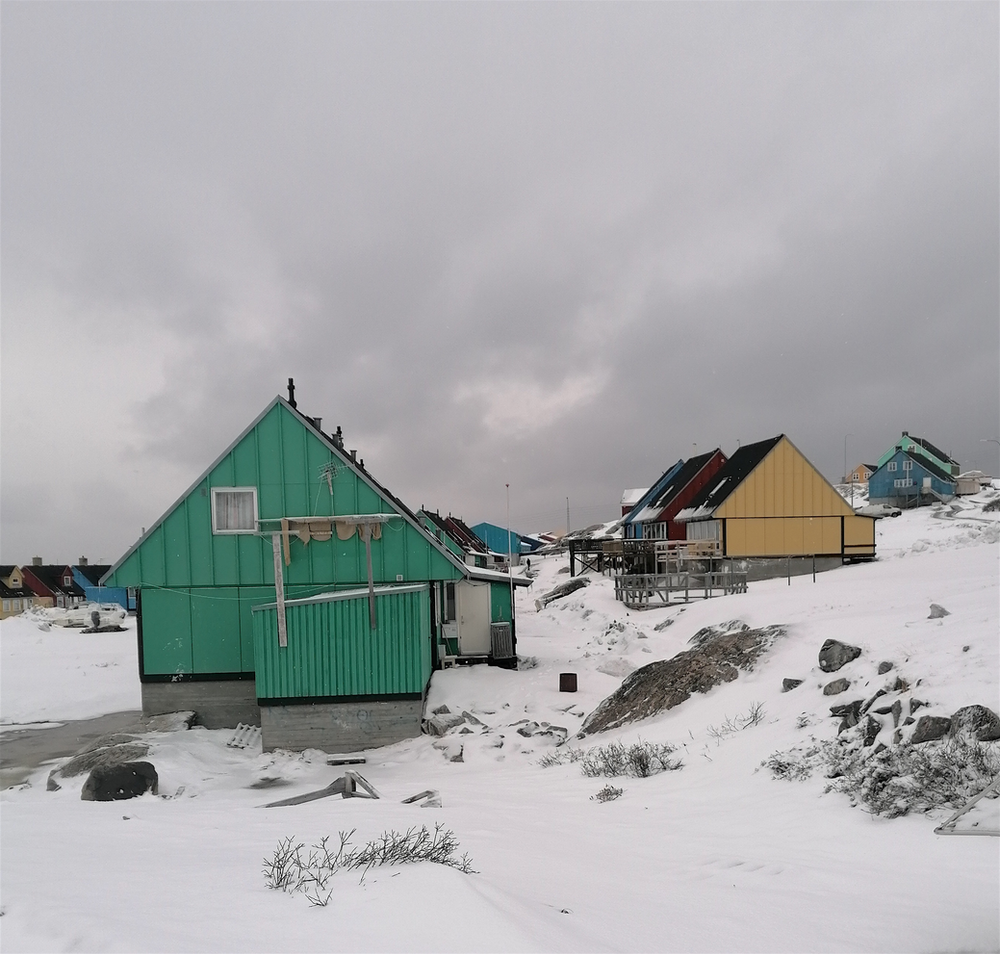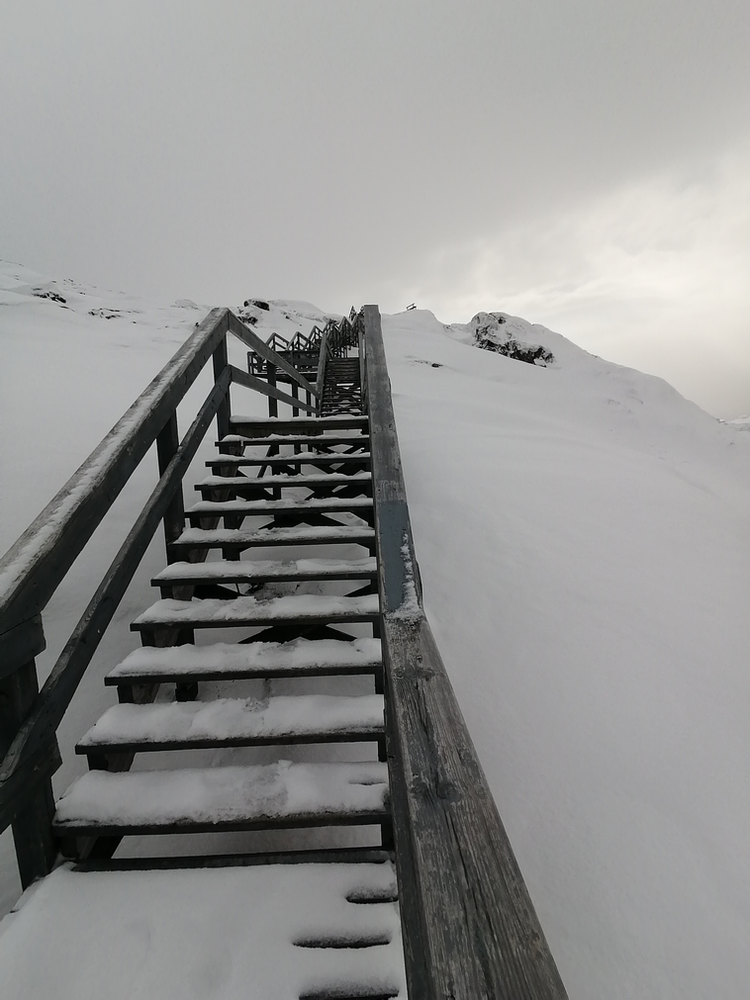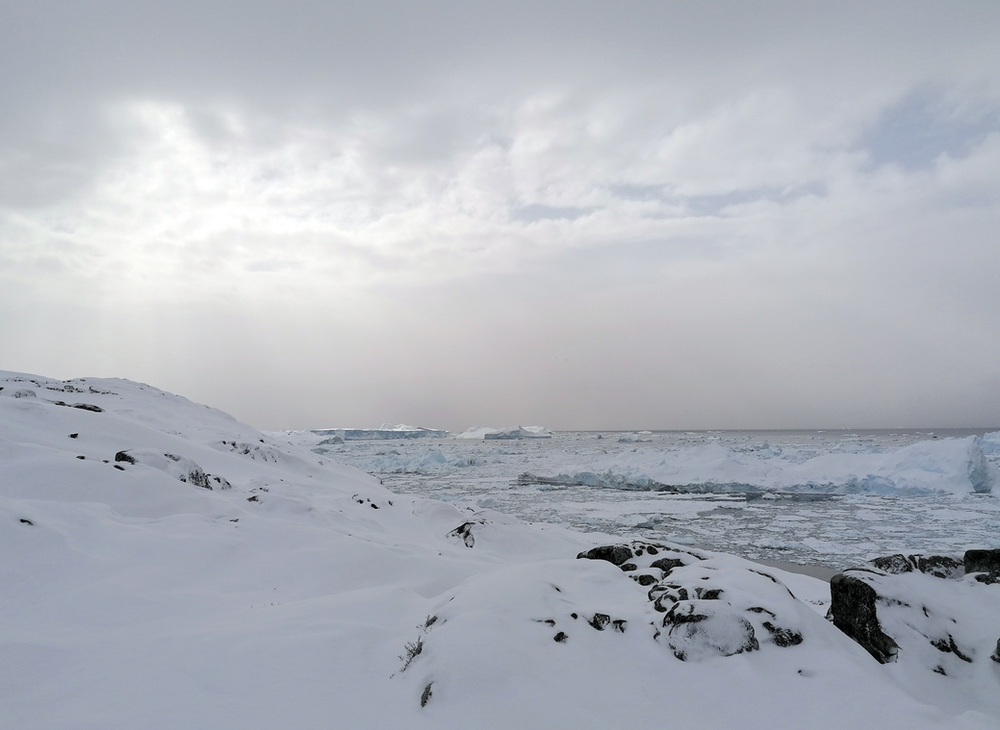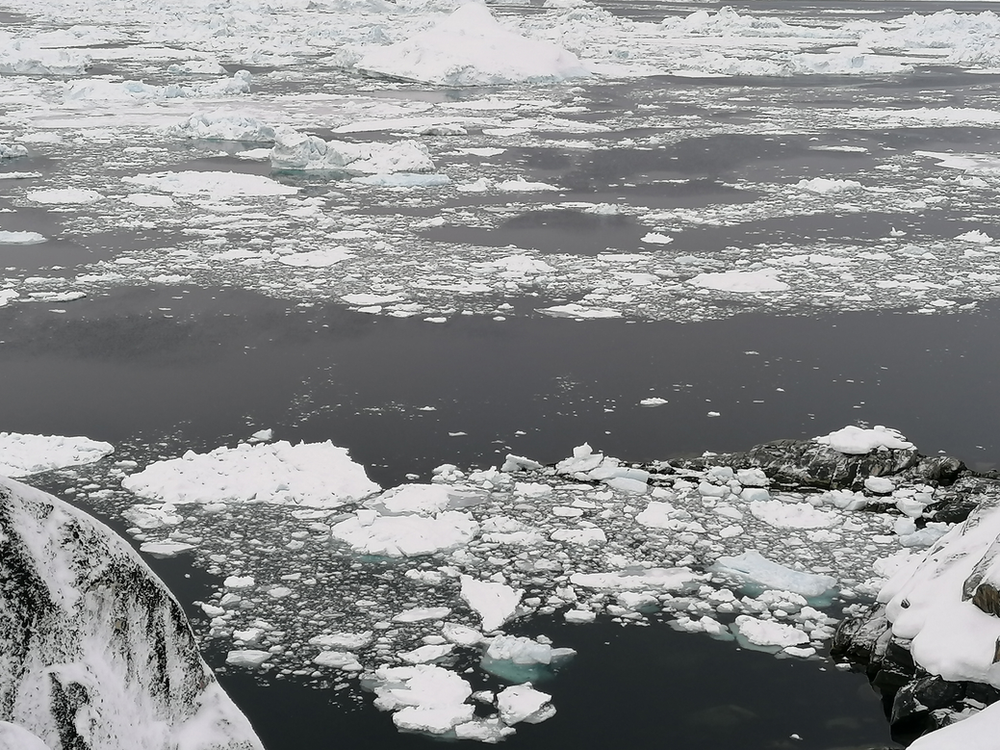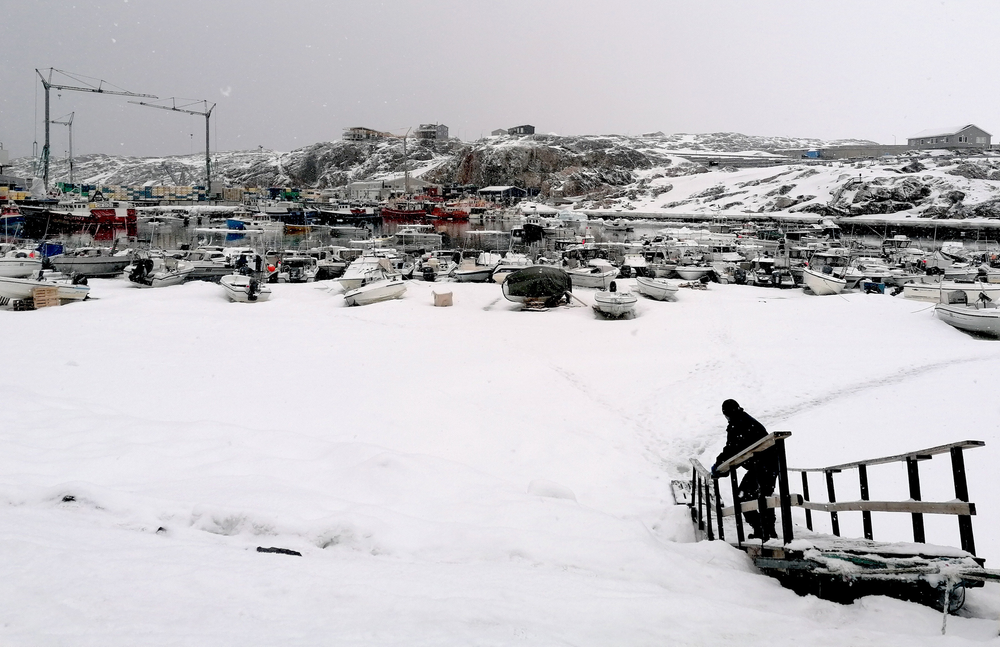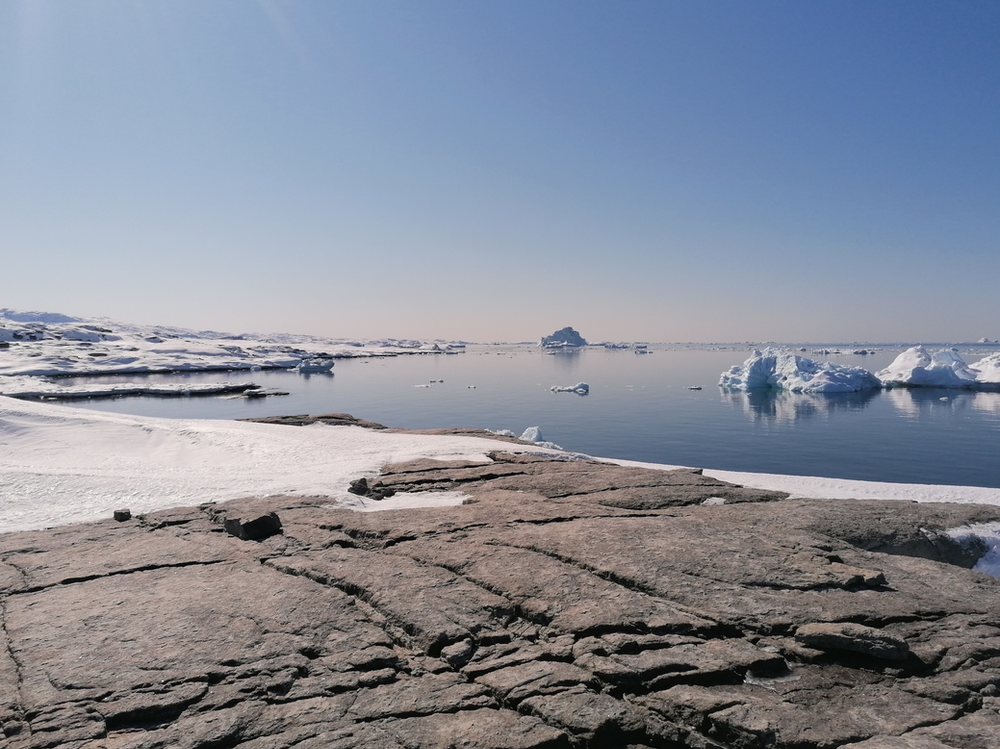Greenlandic urban life vs rural simplicity
Quite an old fashioned museum - lots of photos of the Rasmussen family, clothing, hunting implements, prehistoric Greenland objects, carved objects, and information about mining, fishing etc etc. I come across an artefact made from red throat divers feathers and other divers. It’s beautifully made, but so are the birds – and in Shetland they are now protected.
And just so that you know:
I’ve even found a small workshop with a couple of men carving Inuit and animal figures from reindeer antlers, and the cash machine at the bank. It would have been good to find some contemporary artists but I've no idea where to look. Maybe there aren't any in Ilulissat. There is no art teacher in the college, and the Greenlandic language doesn't have a word for artist (which might explain why the inhabitants of Oqatsuut have no real idea what we artists are doing there). There's a Culture House, but I don't know what goes on there.
Had an early evening coffee with Chari Vijayaraghavan who I met in Oqaatsut around the green bench, and who is also now kicking around in Ilulissat, which was nice as there’s not many people I know here to invite me out.
I‘m scheduled to go out on an evening boat to see the ice fjord, but it’s cancelled (sigh) because of the weather and the amount of ice in the sea, so in the afternoon I walk through the town, hit the outskirts where there are small houses rather than the rather severe looking apartment blocks in the centre .
It's also where a lot of the dogs seemed to be based, so there's a lot of yapping going on.
I make my way to the power station, which is the beginning of one of the walks to the UNESCO Icefjord. Climbing up wooden steps to a bench from where the trail starts for a short hike, I can see it’s not really hiking weather today, the snow up there is so thick I can’t see any path and the sky is looking heavy.
Sitting on the bench - you can just see it at the top of the photo, so imagine I'm there - I look out across the water; there are huge pieces of ice clustered around what I assume is the edge of the glacier – so near so far.
View from the top over the power station to Ilulisaat, and then the other way - you can just see the edge of the Icefjord, and one hell of a lot of ice floating in the bay.
chunks of ice below
Okay – education time: Icebergs are made from fresh water from the glacier (land ice) and the chunks of ice that break off of glaciers and fall into the ocean can be vast or tiny. Sea ice is from salty seawater and takes longer to freeze (the freezing temperature of salt water is lower than fresh water). A boat can usually push through the stuff lying in flat sheets on the surface if it’s not too thick. It has to avoid the iceberg lumps!
I’ve just read this:
‘Sea ice also affects the movement of ocean waters. When sea ice forms, most of the salt is pushed into the ocean water below the ice, although some salt may become trapped in small pockets between ice crystals. Water below sea ice has a higher concentration of salt and is more dense than surrounding ocean water, and so it sinks. In this way, sea ice contributes to the ocean's global "conveyor-belt" circulation. Cold, dense, polar water sinks and moves along the ocean bottom toward the equator, while warm water from mid-depth to the surface travels from the equator toward the poles. Changes in the amount of sea ice can disrupt normal ocean circulation, thereby leading to changes in global climate’.
So the role of sea ice is pretty important:
‘Sea ice is nearly white, so most of the sunlight that hits the sea ice surface is reflected back into space; thus, it has a high ‘albedo’. (Definition of ‘albedo’: it’s an expression of the ability of surfaces to reflect sunlight i.e. heat from the sun. Light-coloured surfaces return a large part of the sunrays back to the atmosphere - high albedo. Dark surfaces absorb the rays from the sun - low albedo). High albedo helps keep the polar regions cold, because the sunlight reflected back into space does not warm the surface. When the climate changes enough to warm the Arctic and to melt sea ice, the polar regions have less of a reflective surface. More heat is absorbed, which causes more melting, which amplifies the warming. This cycle is known as a positive feedback loop that ultimately alters the circulation of the atmosphere’.
If you want more on the importance of sea ice and how its loss effects climate change follow this link:
https://nsidc.org/cryosphere/seaice/environment/global_climate.htmlI
I go and check that I know where the harbour is - I've got to get down there for 08.30am to meet Andreas and his boat. There's still a lot of ice down there and it's a busy place - a lot of fishing boats come and going.
The way onto the ice shelf where the boats are moored up.
It is incredible how fast the weather changes, although I shouldn’t be surprised since it’s also true of Shetland weather, only, being a small island we don’t get the snow with the storms. While I’m still in Ilulissat, there is an overnight snowstorm. Back in my apartment , cooking dinner, I watch the view from my window slowly disappear and swirling snow being whipped up, and feel depressed.
It's not even an very nice view, unlike the views from the college windows - which are amazing!. If I worked there I would spend all my time gazing and drawing out of the windows. I mean - look at the views!! Wouldn't you???
Anyway, back to the gloomy snow storm window view ... I'm worrying that I won’t be able to get back to Oqatssut (and I’ve really, really, really, had enough of Ilulissat). I am not a town person.
Morning brings stillness and sunshine – phew! I can get out! I walk down to the harbour and across the ice carrying more that I arrived with, having stocked up in the supermarket with potatoes and onions etc. The boat journey back in the sun is a piece of cake, not as much floating ice to manoeuvre around. Landing is interesting; Andreas jams the boat in to the ice shelf and holds it there while I clamber out through the window (the usual way), then the one remaining artist, Sonia, arrives, laden down with her luggage and takes my place, and off they go back to Ilulissat. Goodbye Sonia…it was great to meet you and spend time with you – hope the dog project is successful. Sorry you are leaving me here on my own, and thank you for leaving me with apple mouse and cream!
I am so pleased to return to Oqatssut. I go out and walk – following the track on the other side of the hill and find my way back to my rocks where I drew a couple of weeks ago (or was it only a week – I’m losing track of time). The sun is shining, there’s no wind, it’s warm, people-free, and peaceful. Why would I want to be anywhere else?
I climb up the rocks to the top and stand gazing out. Hello world.
The surface of the rocks are pretty interestingly weathered. I'm sure there is a reason for those crisscrosses.
Twice in the evening I go out again just to feel the space, and watch icebergs floating serenely in the bay; there’s not even a ripple on the surface. As I leave the house the small boy in the next-door house is wandering around on his veranda and chats happily to me and I chat back. He probably understands me more than I do him – I have no idea what he is saying. But that’s fine.
The light is wonderful; everything is turning pink-orange, and as I watch the sun go down I see a green flash! Too fast to photograph it but it was definitely there. (Just to note: A green flash is a phenomenon that occurs at sunset and sunrise when conditions are favourable - two optical phenomena combine: a mirage and the dispersion of sunlight. As the sun dips below the horizon the light is dispersed through the earth's atmosphere like a prism).
It is still light at midnight; it doesn’t really get dark now. I wonder what the results of the solargraphic cameras will be like under this midnight sun.
So….. do you want to see some of my drawings and paintings? Okay I will post them in the next Blog. It will just be ‘the work I’ve been making here’



